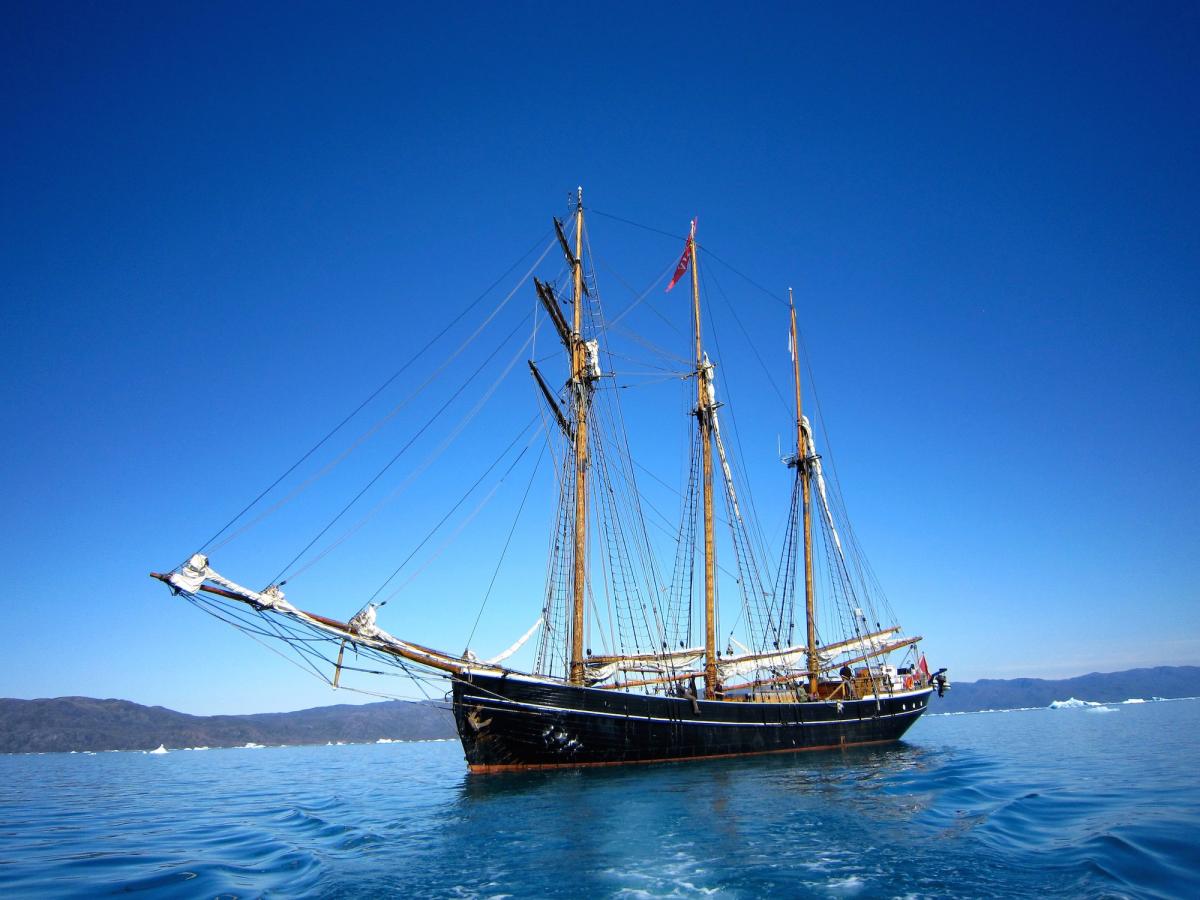by Hans Christian Steen-Larsen (hanschr at gfy.ku.dk), Anne-Katrine Faber, and Malte Winther, Centre for Ice and Climate, University of Copenhagen
Understanding the atmospheric hydrological cycle, especially the processes that influence evaporation from the ocean, are crucial if we want to be able to accurately project future changes in the climate. Prior to the advent of continuous water vapor isotope measurements using laser-based spectroscopy, sampling ambient water vapor was a cumbersome and time-consuming ordeal. Luckily, we can now use Cavity Ring-Down Spectroscopy analyzers to constrain and parameterize these evaporation processes at high resolution and in situ.
However, to enhance our ability to measure the water vapor isotope fingerprint of the interaction between the atmosphere and the ocean we wanted to move our measurements from the land and onto a ship in the Arctic. This, of course, is easier said than done because who has a reasonably-sized ship available, in which we can install a CRDS analyzer, and then sail it to a scientifically interesting area?
The solution more or less landed on our desks on a cold December morning in the shape of an email asking if we were interested in participating in a circumpolar Arctic cruise together with other scientists from different fields. It was an offer we couldn’t resist from both a scientific and adventurous perspective.
However, during preparation it became clear that we needed to postpone the original circumpolar voyage and instead embark on a shorter pilot campaign in order to test the ship and our setup. It was therefore decided that for the summer campaign we should sail from Copenhagen, across the North Atlantic, to the fjords of Southern Greenland, and back again before the autumn.
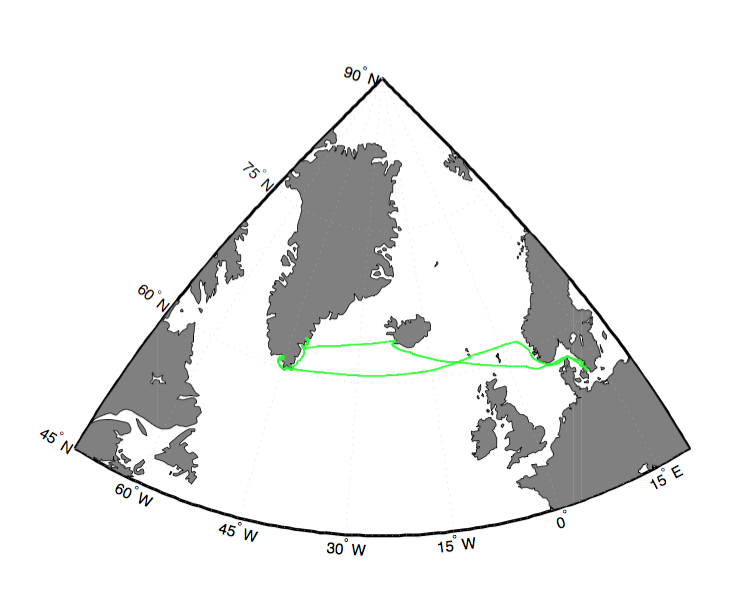
The research vessel used for this incredible expedition was the old ice-class cargo vessel named "Activ". Activ was built in 1951, and in its first 27 years it was used as a cargo vessel for the Royal Greenland Trading Company sailing on the eastern coast of Greenland. In 1978, the ship was re-rigged as a topgallant schooner with room for 16 people including a Captain and crew members. Even after this update Activ remained as an "old fashioned" sail and motor-driven vessel, which is preferably sailed only with wind-power, and with rigging that must be handled with pure manpower. With a total of 13 sails, everyone onboard was obligated to help when needed.
As we readied for departure, we installed all of our equipment on the ship, including an early-generation Picarro water vapor isotope analyzer (Picarro L1115-i).
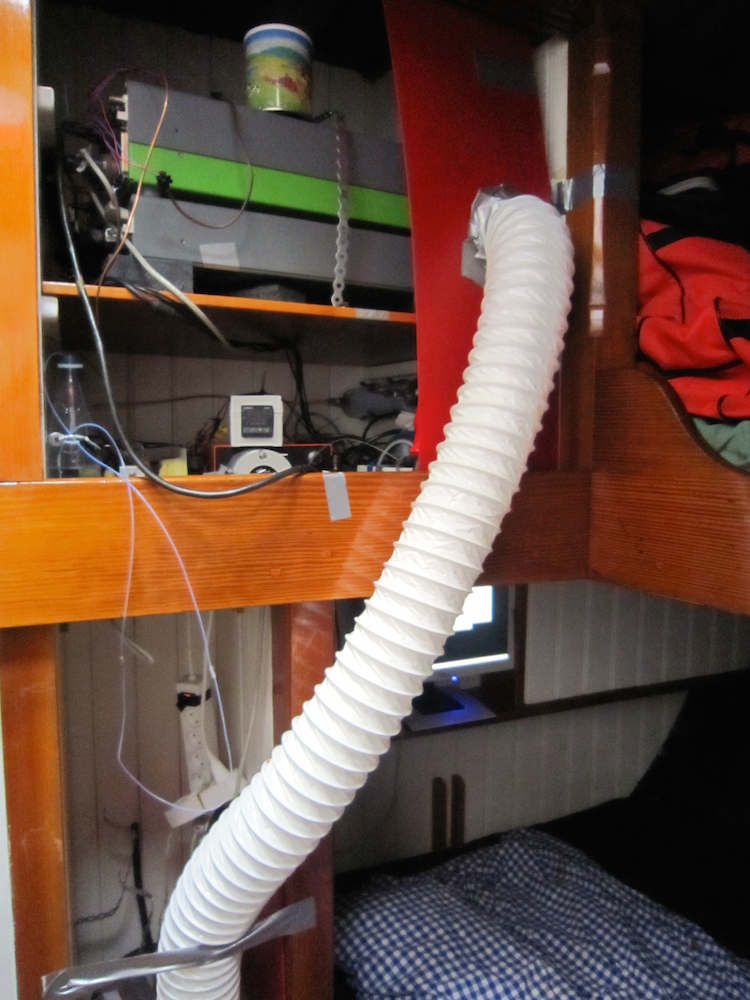
We kept the Picarro close and set it up in the same room as we were sleeping in order to be able to watch the measurements at all times and to ensure constant care of the system to prevent problems. Working with an early generation Picarro analyzer, we needed to make sure that the temperature of the analyzer was as stable as possible. Therefore, we installed a system consisting of a PID temperature controller and a fan that would draw in cold air when needed. Unfortunately, this resulted in the background noise level of our sleeping quarter never being below 90db and we would always sleep with earplugs.
We installed two separate inlet lines – one from the top of the mizzen mast, which is the stern mast, and one from a hoisting system that allowed us to sample water vapor very close to the sea surface. The inlet in the mizzen mast became out main inlet during the measurement campaign.
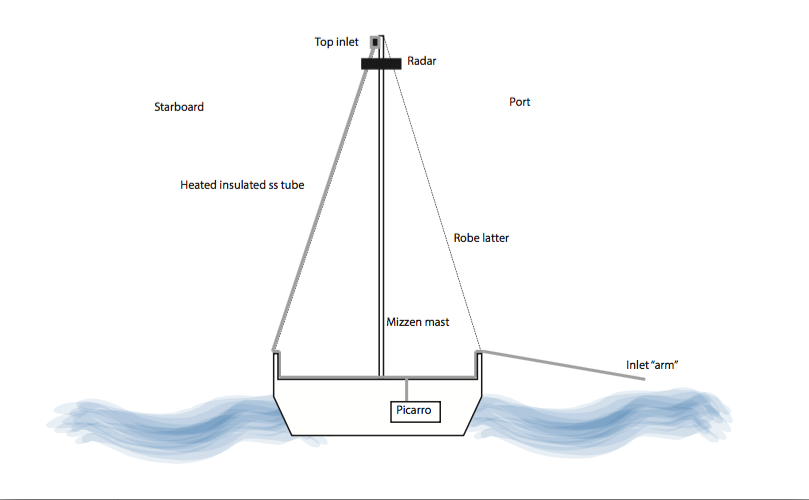
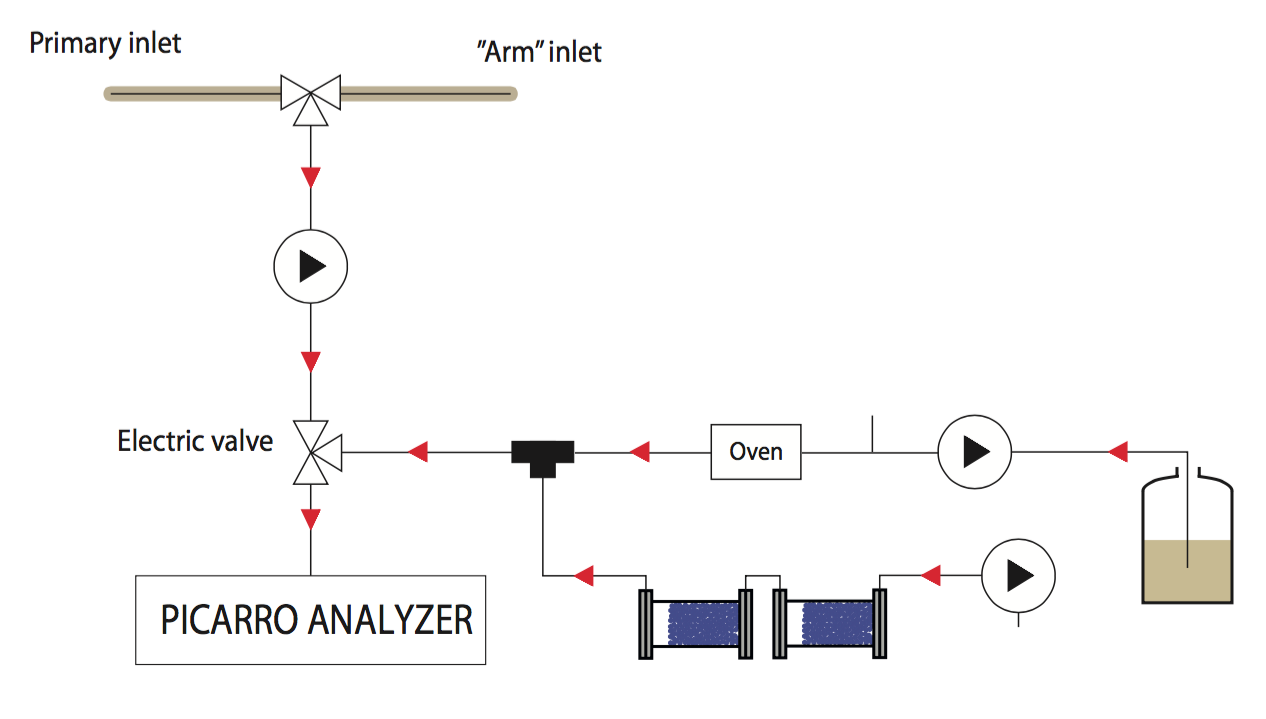
On June 23rd, 2014 we were ready and the ship embarked on her voyage with scientists and a crew consisting of the captain, the gourmet cook and three sailors. We measured water vapor isotopes continuously throughout the journey.
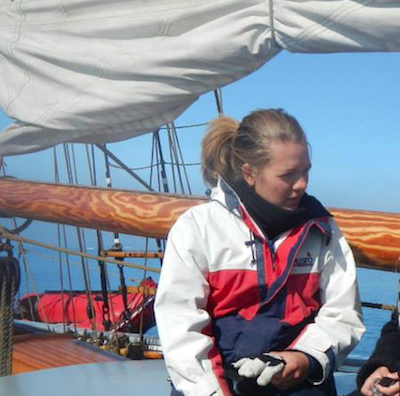
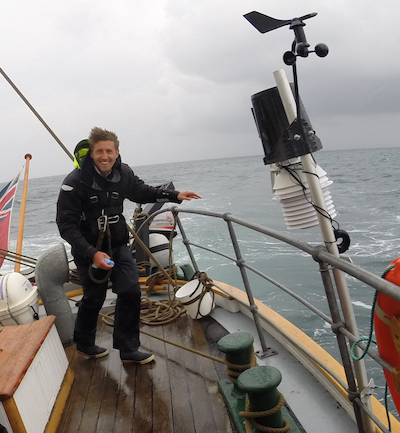
That's Anne-Katrine Faber on the left, Hans Christian Steen-Larsen in the middle and Malte Winther on the right.
The first leg of the cruise went from Copenhagen to Reykjavik, Iceland, which involved sailing through a significant low-pressure system with barometric readings down to 978 mb, but also some calmer weather, when we sighted a pod of sperm whales. The route to Reykjavik went close to the south coast of Iceland and the station of our long-term water vapor isotope monitoring system described recently in Steen-Larsen et al. 2015. We were interested in getting close to this station as it would allow us to directly compare the measured water vapor isotopic composition by the two systems, thereby giving us an independent check on our calibration protocol.
From a non-scientific point of view the second leg going from Reykjavik across the Denmark Strait and into the fjords of South-East Greenland was the highlight of our trip. However, it turned out that before you can enjoy you need to suffer. The crossing of the Denmark Strait was done in such rough weather that one of us was sea sick and not able to get out of bed (except when being rolled out due to the large waves hitting the ship) for 3 days straight. However, the views that met us when reaching the East Greenland fjords were spectacular.
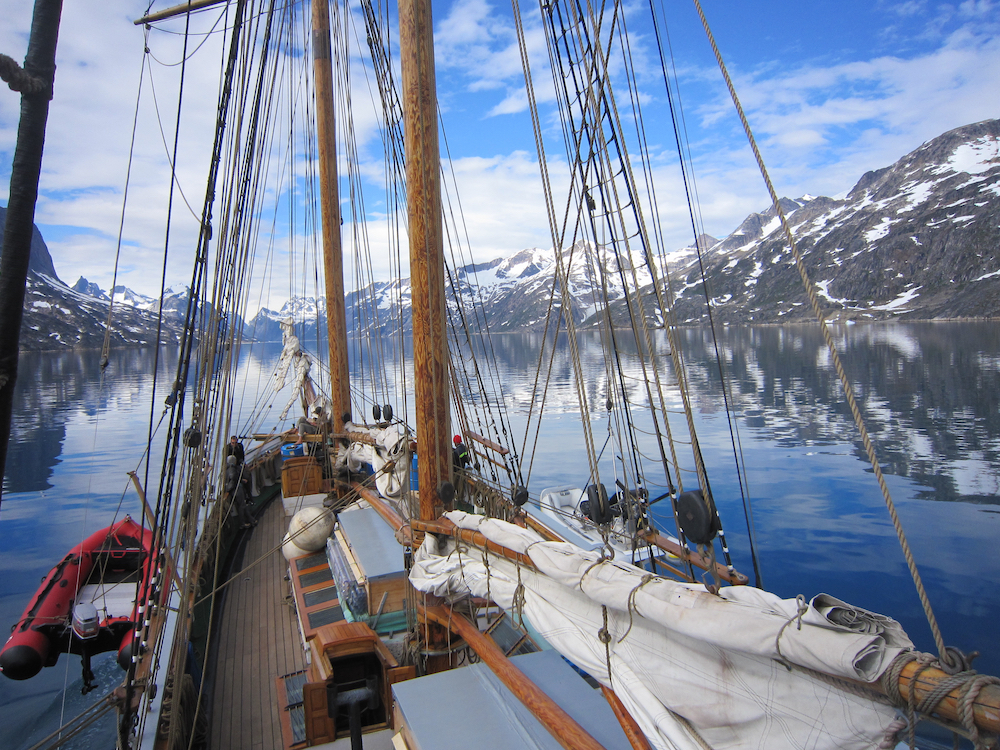
In the fjords and off the coast of Greenland we focused our measurements on studying the interaction between the ocean and the katabatic wind.
At one time while sailing through the fjords we had a visit from one of the locals – though luckily he never came onboard – it was however a magical moment ‘standing’ across from Nanook – the polar bear.
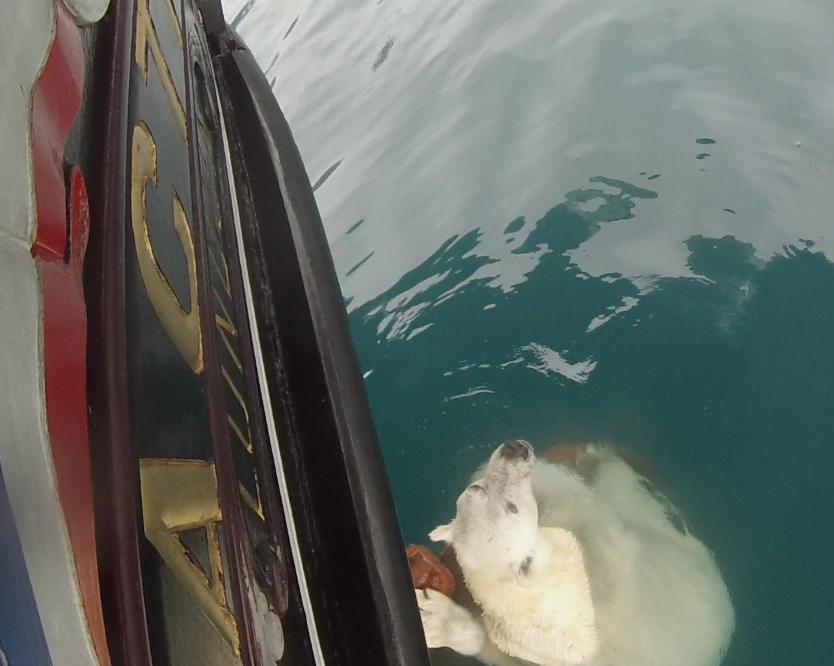
After spending most of the summer in the fjords of South-East Greenland we were ready to return to Denmark. We once again had to cross the Denmark Strait, which again put one of us out of the game with sea sickness lasting several days. As anyone who has ever been seasick knows – it is not fun at all. Then, on a calm fairy-tale like morning of September 20th, 2014 we passed into Øresund with Kronborg Castle (featured in Hamlet by W. Shakespeare) on our starboard side, known among Danish sailors as the sign that you had returned home.
Prior to our cruise on the Activ, only a very limited number of vapor measurements existed for the arctic region. Therefore our new measurements have aided in improving the coverage and understanding of the spatial and temporal variations in the isotopic composition of vapor in the North Atlantic. The unique route of the expedition yielded excellent conditions for monitoring water isotopes in vapor throughout the duration of the expedition. Thus our measurements cover a span of geographical variations from the background atmospheric vapor conditions over the North Atlantic Ocean to local atmospheric conditions in Greenlandic fjords.
The continuous measurements from the shipboard Picarro analyzer were also supplemented with weather measurements and sea surface temperature conditions. In combination, we look forward to using this data to understand the hydrological processes occurring in the region. Look for our future publication! We’ll be sure to share it with the Picarro community!
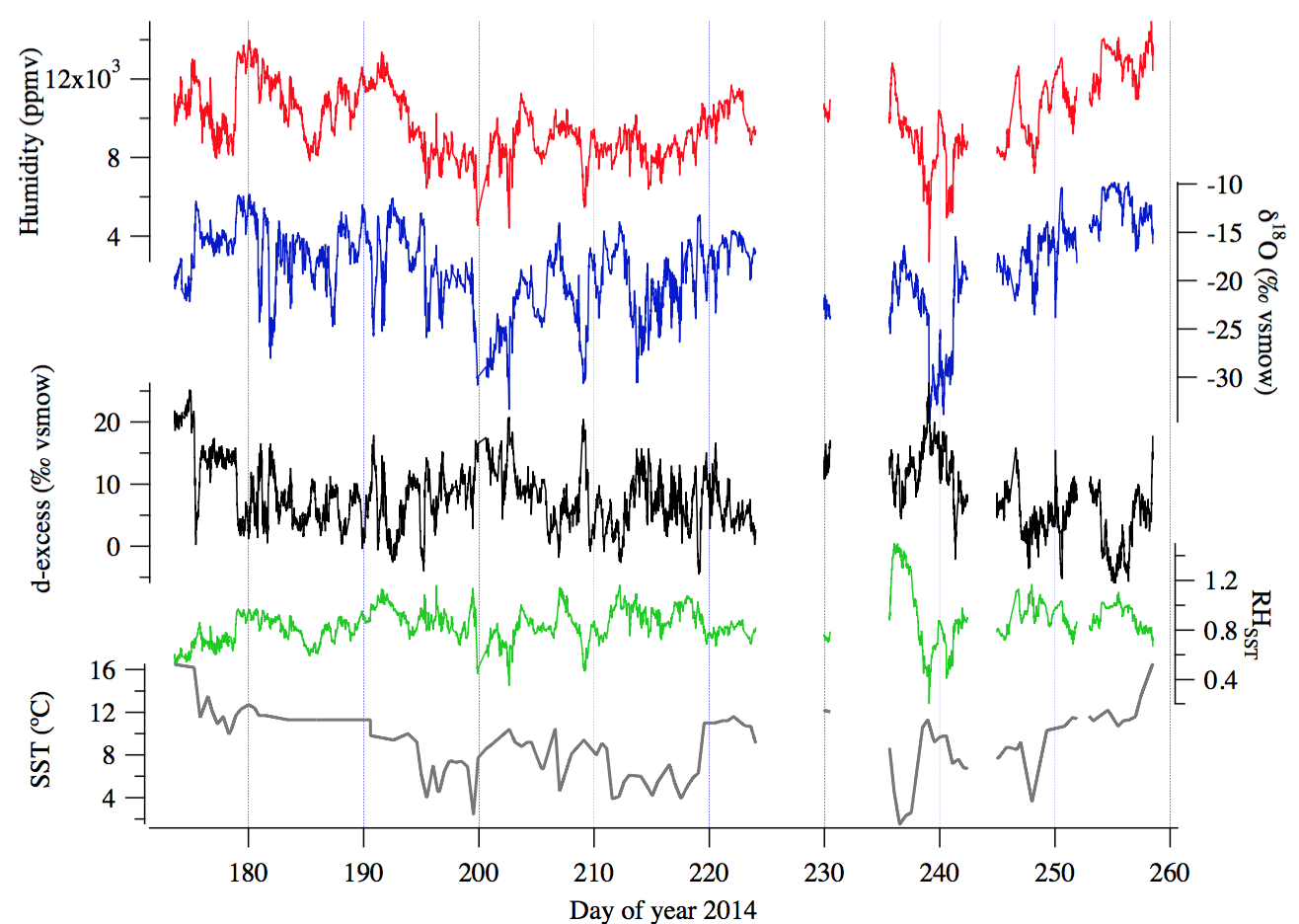
Please contact Hans Christian Steen-Larsen (hanschr@GFY.KU.DK) for more information about their research cruise on the Activ.
To learn more about Picarro's water isotope analyzers, please visit Measure water isotopes in solids, liquids and vapor.
